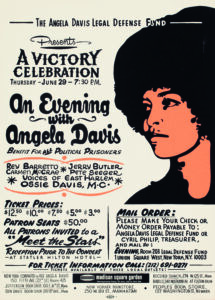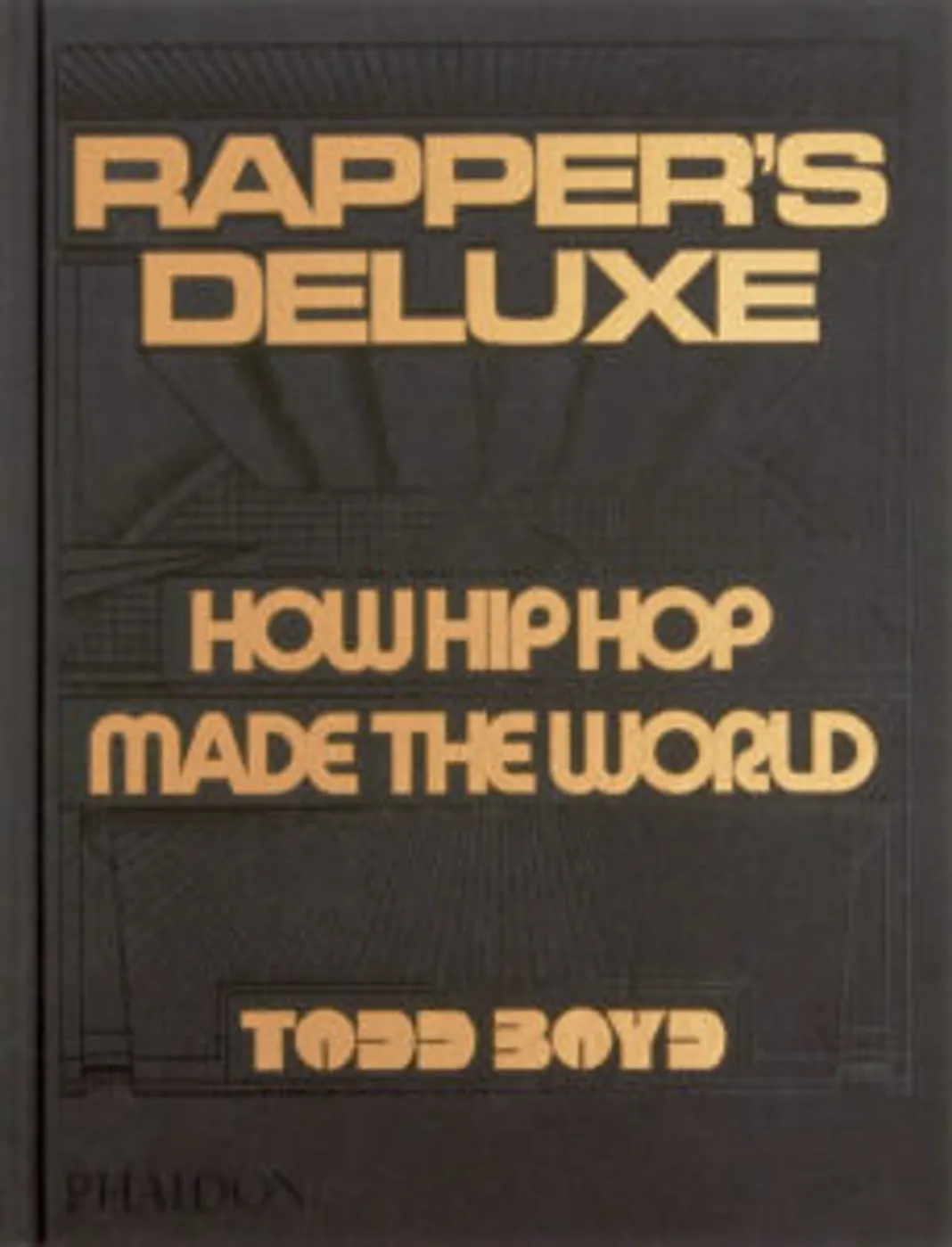
Detroit native Dr. Todd Boyd is a renowned educator, author and media commentator on popular culture who has extensively studied the relationship of music and society. Shining light on the evolution of the rhyming-centered genre that was birthed in New York, his new book, Rapper’s Deluxe: How Hip-Hop Made The World, accentuates hip-hop’s colossal influence in and out of the music industry. Thoroughly analyzing the rise of hip-hop’s prominence, the profusely illustrated 281-page hardcover (Phaedon, 2024) fully explores the burgeoning rap game’s ties to the media, fashion, and sports scenes, to name a few.

The book additionally triumphs for the musical form’s 50th anniversary and many of the figures who made unique contributions to its growth. Among those written about here are Cindy Campbell and her brother, Clive Campbell (aka Kool Herc), NBA basketball legend Walt “Clyde” Frazier and heavyweight boxing great and agent-for-social-change Muhammad Ali, along with artists who created music in genres such as R&B and jazz. such as Millie Jackson, whose extended raps gave female MCs like Lil Kim the power to own their sensuality. It furthermore examines how famed East Coast rapper Nas’s performance with the National Symphony (Nas is himself the son of a jazz musician) ignited a merger between genres that many would’ve never thought could cohabit the same sonic and cultural space.

Rapper’s Deluxe: How Hip-Hop Made The World details hip-hop’s enormous impact on the fashion industry, showcasing the seminal rap group Run DMC, who defined street culture by donning unique clothing like black leather jackets, fedoras and authentic glasses. Nike would later make a lasting imprint in hip-hop attire after basketball player George Gervin did an Ice Slim-inspired photo shoot with the sneaker brand while sitting on ice. Readers will follow the intersection of historical currents and the genre’s rise from its underground roots to global dominance–the Black Panthers, the black power movement, and Kanye West’s involvement in Donald Trump’s MAGA campaign serve as examples of hip-hop both feeding off and infusing American politics as it grew into a major cultural force. Boyd shows how the music made people more politically conscious with songs like Queen Latifah’s “U.N.I.T.Y,” which, for example, allowed women’s voices to be heard
Each chapter documents milestones that positively transformed hip-hop’s once-bad reputation from the 1970s to the present. In cinema, Blaxploitation films would redefine what most would interpret as braggadocious lyrics into powerful declarations about hustling, with scenes of aspiring rappers selling their CDs out of the backs of cars. Along these same lines a movie like Scarface, for all the title character’s less-than-admirable and ultimately self-destructive qualities, managed to capture the same relentless go-getter attitude and mentality that passionate artists relate to and often mirror as they try to make it in the world.
The book notes key moments in the progression of hip-hop culture in America’s consciousness—from Eminem, Kendrick Lamar, Dr. Dre, Snoop Dogg, and 50 Cent joining forces for a stellar performance at the 2022 Super Bowl Half Time Show, to Cindy and Herc’s Back to School Jam party, which put hip-hop on the broad mainstream map. The first rapper to earn a Pulitzer Prize for his album, DAMN, Lamar changed how people saw hip-hop with, in the words of journalist and Pulitzer administrator Dana Kennedy, “affecting vignettes capturing the complexity of modern African American life.”

‘Next Generation Jeans’ Tommy Hilfiger Ad Shoot
Photo by Alex Berliner ® Berliner Studio/BEImages
It’s worth noting that book’s title is a deliberate play on The Sugarhill Gang’s first rap single, “Rapper’s Delight.” Debuting amid 1979’s feverish disco craze, the song was created by Grandmaster Caz’s manager Big Bank Hank (who worked in a Bronx pizza parlor before scoring his own record deal) and his two friends, Master Gee and Wonder Mike. But respectful nod to history that it is, the title only hints at the author’s meticulously comprehensive research and nuanced level of cultural observation. Rapper’s Deluxe: How Hip-Hop Made The World tells the story of the genre’s lasting and pervasive impact on our culture, with striking visuals and bold fonts that illustrate and speak to hip-hop’s truest nature.
***
Marking the publication of Rapper’s Deluxe during Black History Month, Hollywood.com was fortunate to discuss its inspiration and evolution with the author, who also offers exclusive insights into his writing process … and teases us with some of his thoughts on future projects:
HW: What inspired you to craft Rapper’s Deluxe: How Hip Hop Made the World?
TB: I was inspired by the opportunity to tell hip hop’s story, a story that has grown and evolved over such a long period of time. Anything that has been around for 50 years has to have substance. There are no 50-year fads, or 50-year trends. Fads and trends come and go, but hip hop has been around for half a century now. The opportunity to tell such a broad and all-encompassing story in ways that were both public and personal was something that very much inspired me.
HW: How were you able to connect sports, fashion, media & more into hip-hop culture?
TB: Hip hop to me has always been about more than just music. The music is of course very important, that’s the frame, but it’s the way in which the music came to influence so many other areas like sports, or film, or fashion, that transformed hip hop into a cultural movement. The ideas, the energy, the circumstances embedded in the music ultimately found expression in a wide variety of other cultural forms. Hip hop is pervasive and its influence is broad. As the subtitle of the book says “hip hop made the world.”
HW: And the hardest part of curating Rapper’s Deluxe?
TB: The book’s third chapter, “It Was All a Dream,” set in the 1990s, was the hardest chapter to write because this is the decade that hip hop really blew up. There is so much happening in the 90s that one has to make some hard choices about to include and what to leave out. I like the balance of what ended up in that chapter, but there’s a lot to consider and you can’t cover everything. But I still think it turned out well.

HW: What do you hope readers take from the book?
TB My hope is that people understand hip hop culture is Black culture, and Black culture is American culture. The developments that are highlighted in the book tell a 50-year story of hip hop, but also a 50-year story of America. This is American culture and American history. It is not marginal, it is not niche, it is American culture writ large. It’s like Drake and J. Cole say on “First Person Shooter” it’s “big as the Super Bowl.” This is epic and I want people to understand just how epic it all is.
HW: Are there any topics you wish you could’ve expanded on further?
TB: I feel like the book spends enough time and devotes enough attention to each of its topics. It strikes a delicate balance. You could always go more in depth on certain things, but I feel like the book gives you a representative sample that covers a wide range of topics relative to their importance. The book is like a cultural tasting menu so when you get to the end, you’re full, you’re not walking away hungry for more.
HW: Can you tell us one thing that kept you motivated during the editorial process?
TB: Working on the first draft for me is all about getting my ideas written down. It’s about this transfer process of getting the ideas out of my own head and out into the world for the first time. Like the Rakim quote that I reference in the book, “I start to think/and then I sink into the paper/like I was ink.” Editing is the process where you mold and shape those ideas, where you improve upon those raw thoughts and then turn them into nuggets of information that the world will eventually have the opportunity to read. It all comes together in the editing so the motivation is to get it right, so that when people do see it, they are able to absorb it as you intended.
HW: If you could have dinner with one rapper dead or alive who would it be and why?
TB: There are a lot of rappers I could have dinner with right now, so that’s not something that I need to speculate on really. The people that I would want to have dinner with would be people like Malcolm X, Muhammad Ali, and Miles Davis. Having dinner with rappers is fairly attainable, but having dinner with people such as the ones I’ve mentioned is something that I can only imagine.
HW: What decade or period in hip-hop did you enjoy researching the most?
TB: The first chapter, “Right On for the Darkness,” the chapter on the 1970s, was the most fun to write. Hip hop was underground for most of this decade, so being able to write about all the influences that evolved during this era was something that I really enjoyed. Being able to make connections between hip hop and people like Richard Pryor, Angela, Davis, and the Black Panthers, or to establish links to historical circumstances like the Vietnam War and the blackout in New York, this was quite enjoyable to me, because when you normally read about hip hop these are not the type of connections that get made. People talk about DJ Kool Herc’s legendary party in 1973, but they do not mention that Pam Grier’s Coffy was the number one movie at the box office during that time. Being able to bring all of this cultural history to people’s attention was something that I found really exciting.

HW: What are your thoughts on hip-hop recently celebrating its 50th anniversary?
TB: Fifty years is a long time. I love it! Now onto the next fifty!
HW: And finally, any other book projects you are looking to publish soon?
TB: I’m always in the lab, working on the newest/latest. There’s more to come. The great playwright August Wilson wrote this cycle of plays to cover every decade in the 20th century. I’ve always found that to be an inspiring challenge. I’ve caught the later part of the 20th Century in Rapper’s Deluxe and the early part of the 21st. This book begins in 1973. But how did we get to 1973? What happened before? What’s the prequel? Stay tuned…
You can purchase Dr. Todd Boyd’s book Rapper’s Deluxe: How Hip-Hop Made The World everywhere in stores and online.




